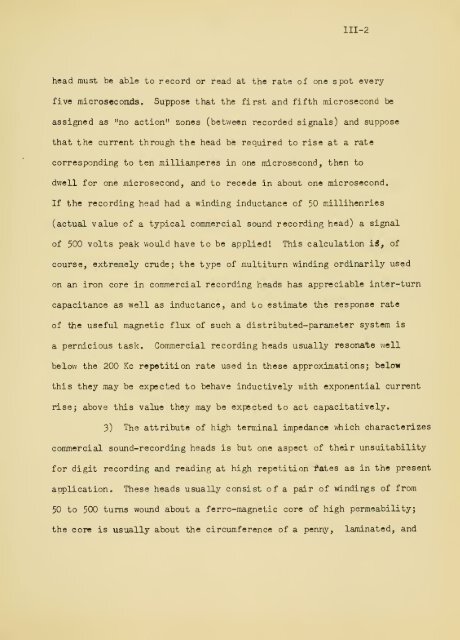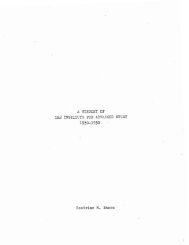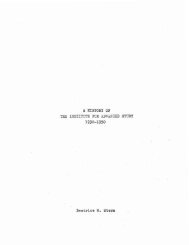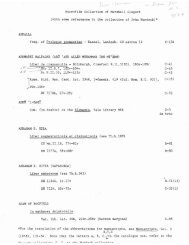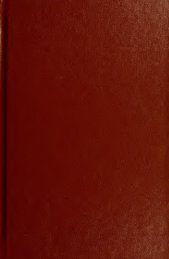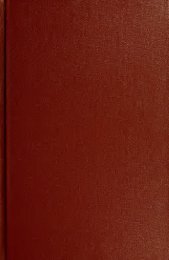First progress report on a multi-channel magnetic drum inner ...
First progress report on a multi-channel magnetic drum inner ...
First progress report on a multi-channel magnetic drum inner ...
Create successful ePaper yourself
Turn your PDF publications into a flip-book with our unique Google optimized e-Paper software.
III-2<br />
head must be able to record or read at the rate of <strong>on</strong>e spot every<br />
five microSecorxds. Suppose that the first and fifth microsec<strong>on</strong>d be<br />
assigned as "no acti<strong>on</strong>" z<strong>on</strong>es (between recorded signals) and suppose<br />
that the current through the head be required to rise at a rate<br />
corresp<strong>on</strong>ding to ten milliamperes in <strong>on</strong>e microsec<strong>on</strong>d, then to<br />
dwell for <strong>on</strong>e microsec<strong>on</strong>d, and to recede in about <strong>on</strong>e microsec<strong>on</strong>d.<br />
If the recording head had a winding inductance of $0 millihenries<br />
(actual value of a typical commercial sound recording head) a signal<br />
of 500 volts peak would have to be appliedl This calculati<strong>on</strong> iS, of<br />
course, extremely crude; the type of <strong>multi</strong>turn winding ordinarily used<br />
<strong>on</strong> an ir<strong>on</strong> core in commercial recording heads has appreciable inter-turn<br />
capacitance as well as inductance, and to estimate the resp<strong>on</strong>se rate<br />
of the useful <strong>magnetic</strong> flux of such a distributed-parameter system is<br />
a pernicious task. Commercial recording heads usually res<strong>on</strong>ate well<br />
below the 200 Kc repetiti<strong>on</strong> rate used in these approximati<strong>on</strong>s; below<br />
this they may be expected to behave inductively with exp<strong>on</strong>ential current<br />
rise; above this value they may be expected to act capacitatively.<br />
3) The attribute of high terminal impedance which characterizes<br />
commercial sound-recording heads is but <strong>on</strong>e aspect of their unsuitability<br />
for digit recording and reading at high repetiti<strong>on</strong> fates as in the present<br />
aDplicati<strong>on</strong>. These heads usually c<strong>on</strong>sist of a pair of windings of from<br />
50 to 500 turns wound about a ferro-<strong>magnetic</strong> core of high permeability;<br />
the core is usually about the circumference of a penny, laminated, and


